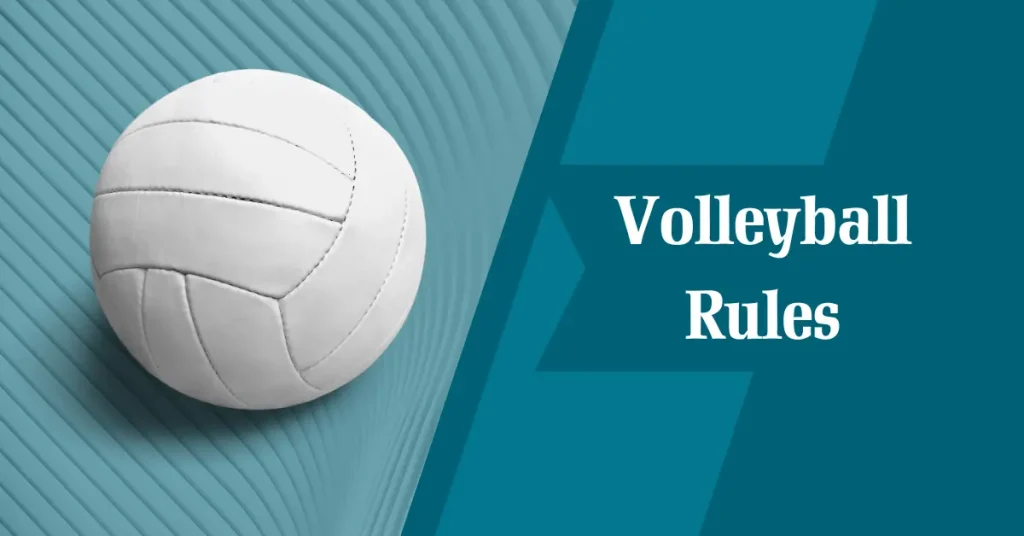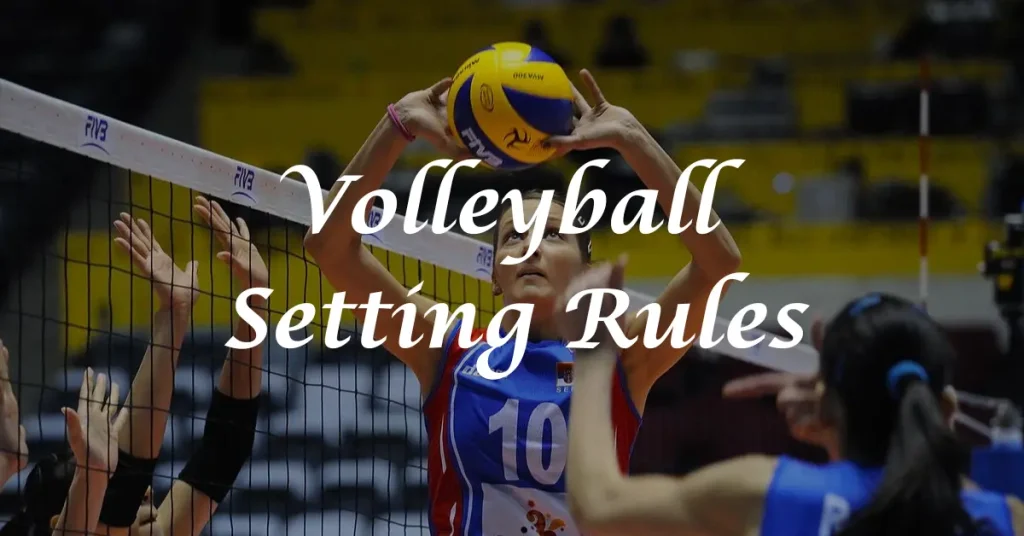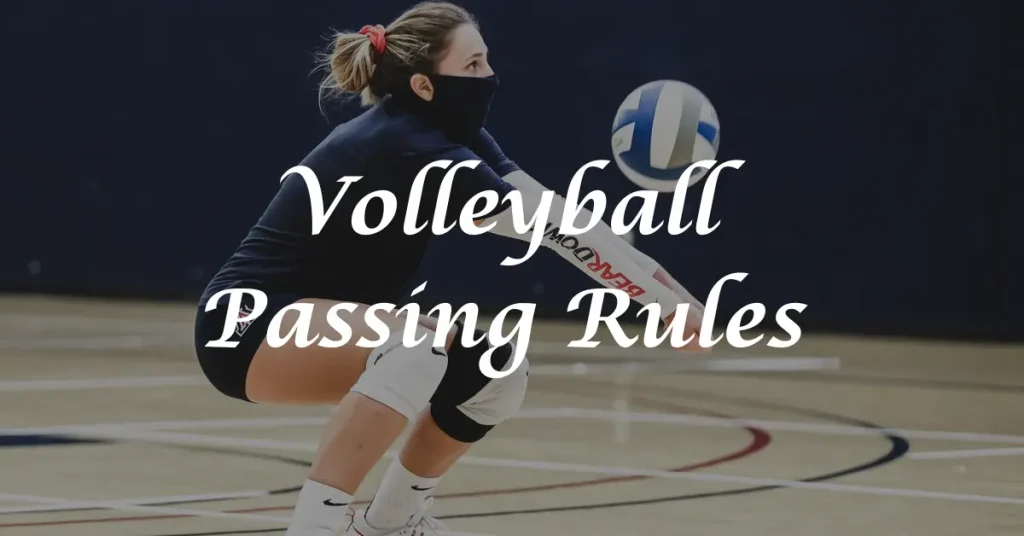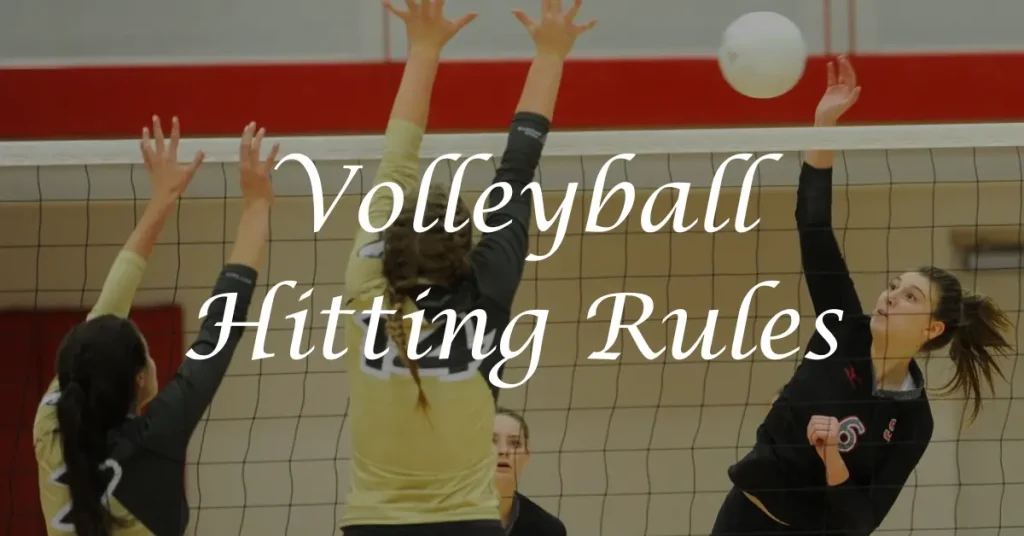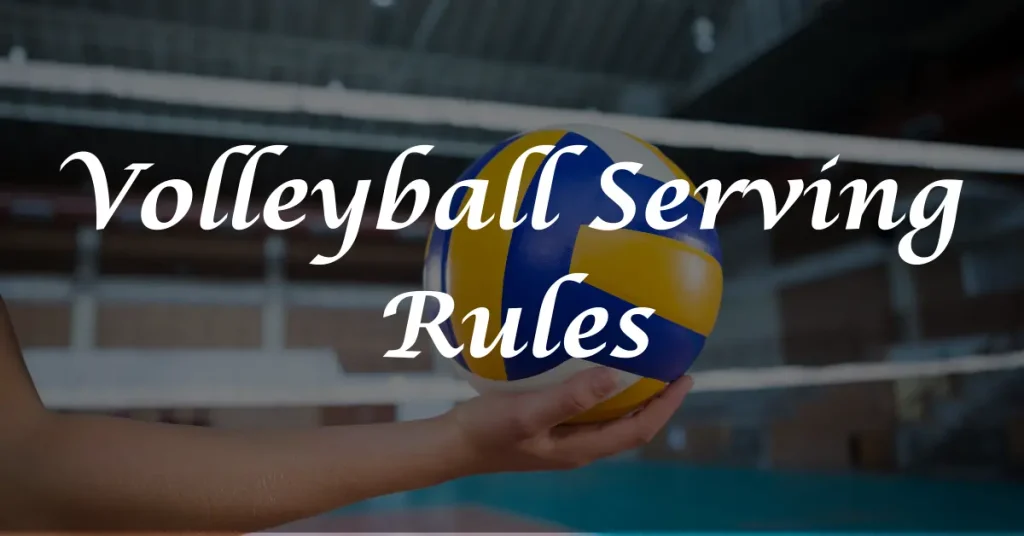Volleyball, a popular sport that is played between two teams, was officially started in 1896. Each team consists of six players who face each other. The main aspect of the game is to score a point by landing the ball on the opponent’s court or to win a point at the opponent’s fault. This game is typically played on a rectangular court. In volleyball, you can think of your hands as a racket, making it similar to racket sports, where your hands serve as a racket. There are various types of volleyball games, like sand volleyball, indoor volleyball, and others, but here I am talking about indoor 6 vs 6 players.
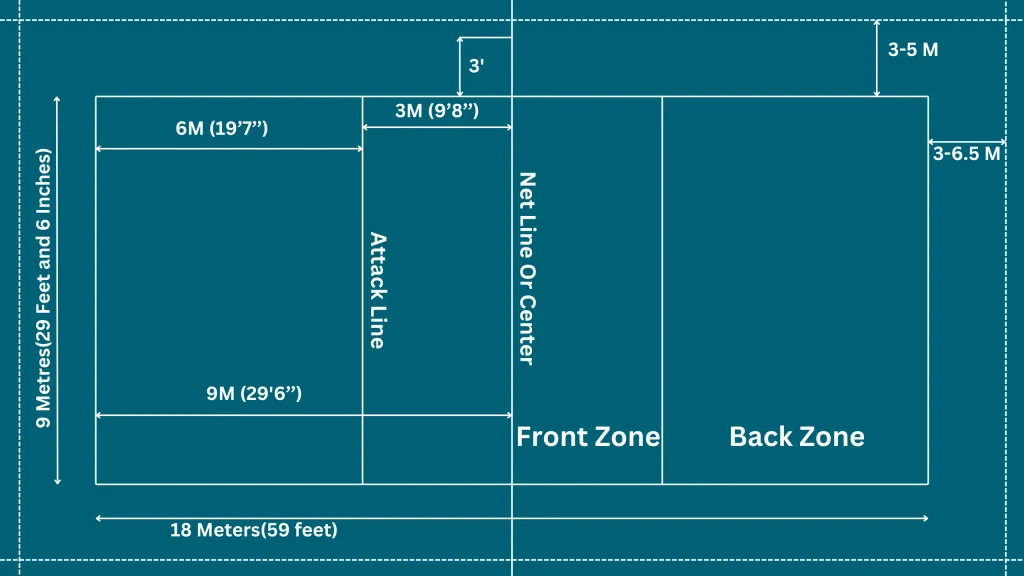
Volleyball Rules & Basics:
Volleyball is played on a rectangular court and is divided into two parts equally. Six players of Team A are on one side, and six players of Team B are on the other side of the net. The court is divided by a net, and there are two antennas on the top of the net. A point or score is considered when the ball is passed over the net and between the antennas.
Court Size:
There are some rules for playing volleyball, and the most mandatory one is court size, which is given by FIVB(Fédération Internationale de Volleyball). The court dimensions are the same for both men and women, which are given as follows:The court is divided into two parts by net, and the length for one team is 9 Meters(29 ft. and 6 inches), but the width remains the same. The height of the net is different for men and women, which is given as follows:The court, after the separation by the net, is further divided into two parts: one is called the front zone, and the second is called the back zone. The dimensions of the front zone and back zone are:Volleyball Size, Weight, & Dimensions:
The size, weight, and pressure of the volleyball is specified by FIVB and given as follows:
| Weight | 260-280 grams (9.2-9.9oz) |
| Pressure | 4.26-4.61 psi (0.3-0.325 kg/cm^2) |
| Size In Diameter | 20.5-21.5 cm (8.1-8.5 inches) |
| Size In Circumference | 65-67 cm (25.5-26.5 inches) |
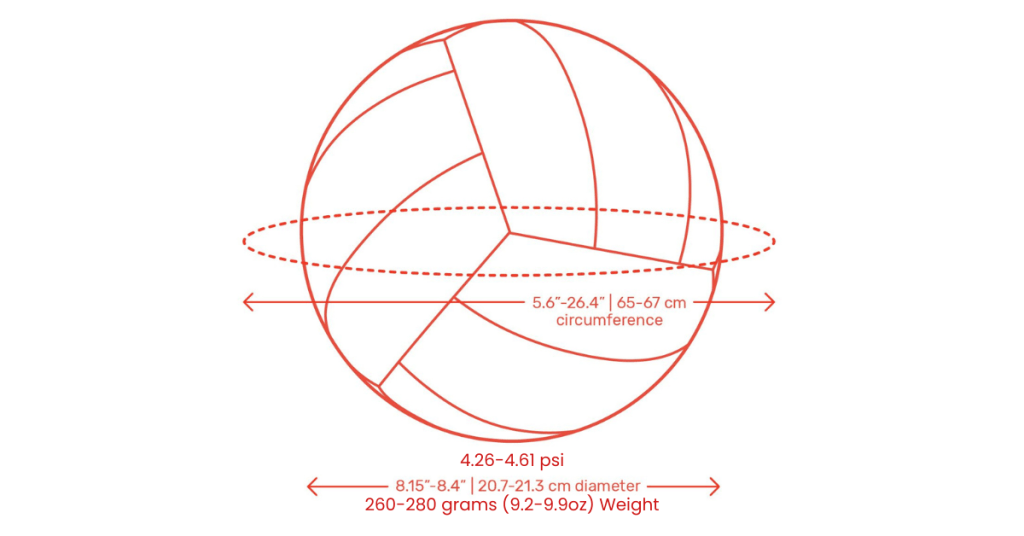
Serving:
The game starts with the serve, and also each point starts with the serve. The service serves from outside the court line(end line), which is around 3m (9’10’’). The team that wins the toss gets the opportunity to serve the ball first. The objective of the service is to hit the ball across the net in the opponent’s area. If the ball touches the opponent’s area under the line, it’s good; if it touches the marked line, it’s good; and if it touches the net and falls on the competitor’s area, it’s also good, but if the service lands outside the marked line, it or touches the net and come back to your area it’s not good and considered as a fault. In this case, your team will lose a point. (Keep in mind when serving the server must stand behind the end line.
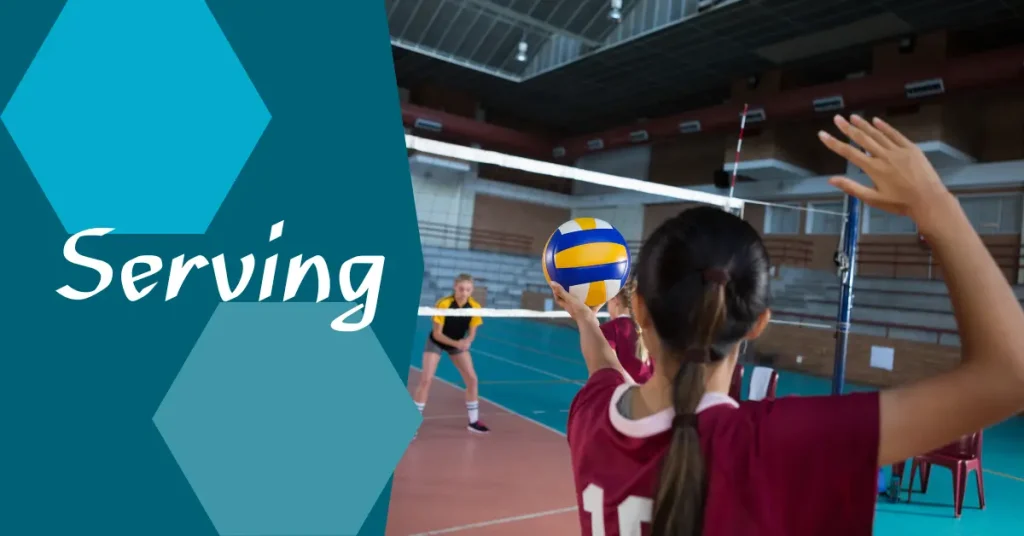
Receiving:
The team who won the toss serves the ball, and if the service is good, the other team will receive the ball. Before receiving a ball on your side, you must be aware that your team is allowed for just three touches, which are not mandatory to do, but you can use it. The permission of three touches is because the serving ball comes with a speed of over 50 miles per hour (80 km/hour). (Keep in mind doing three touches, the ball should remain in the air. If it touches the ground, the point ends.)
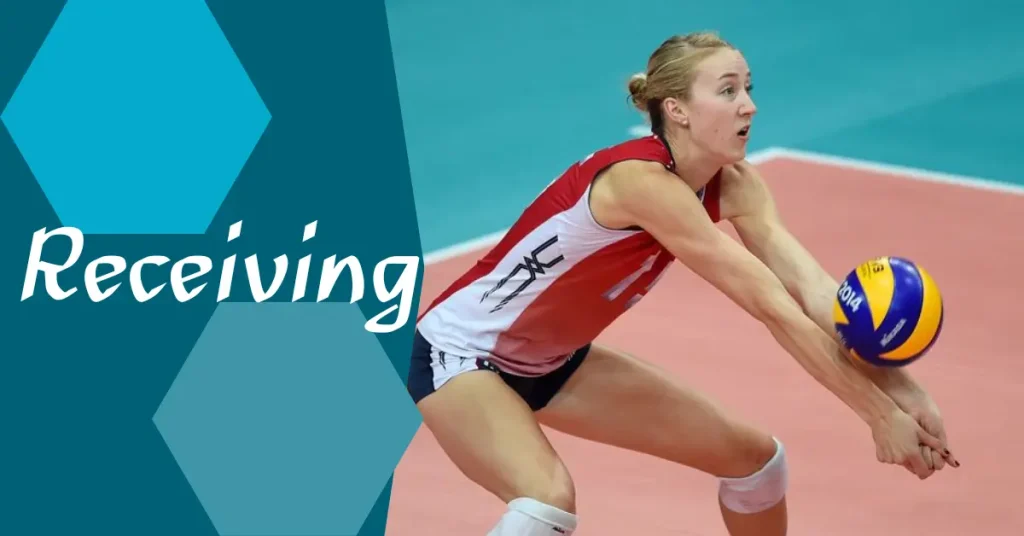
Pass:
The first shot you receive after a serve is known as a pass, and usually, forearms are used for passes due to high speed, and forearm muscles absorb the momentum of speed. Passers pass the ball in the middle of the court near the net to other players of the same team.
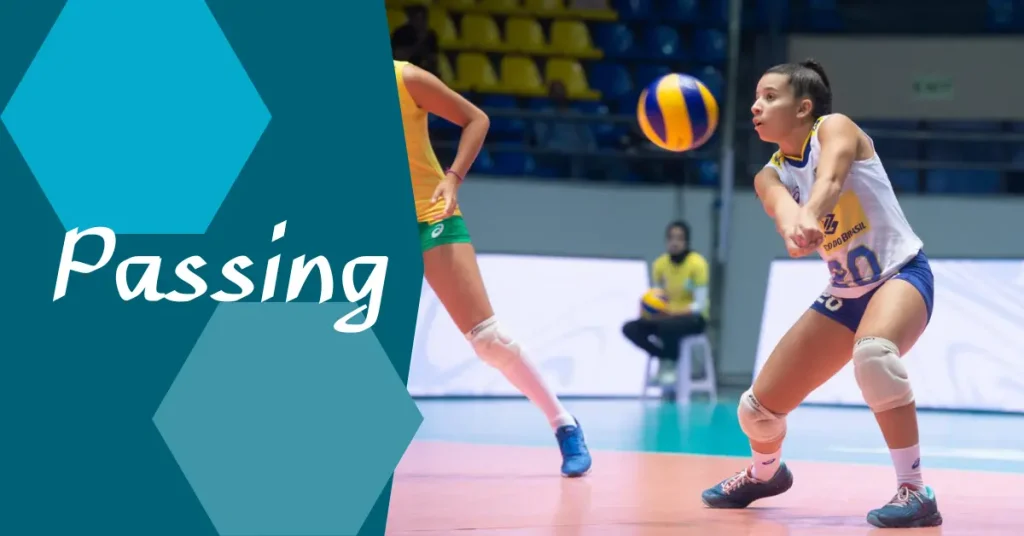
Set:
The Second touch is known as set, and the player who receives the ball is known as setter. The primary intent of the setter is to set the ball with the finger and wrist of hands and pass the ball to the hitter in the middle near the net. This is because it’s easier for their player to hit the opponent’s area.
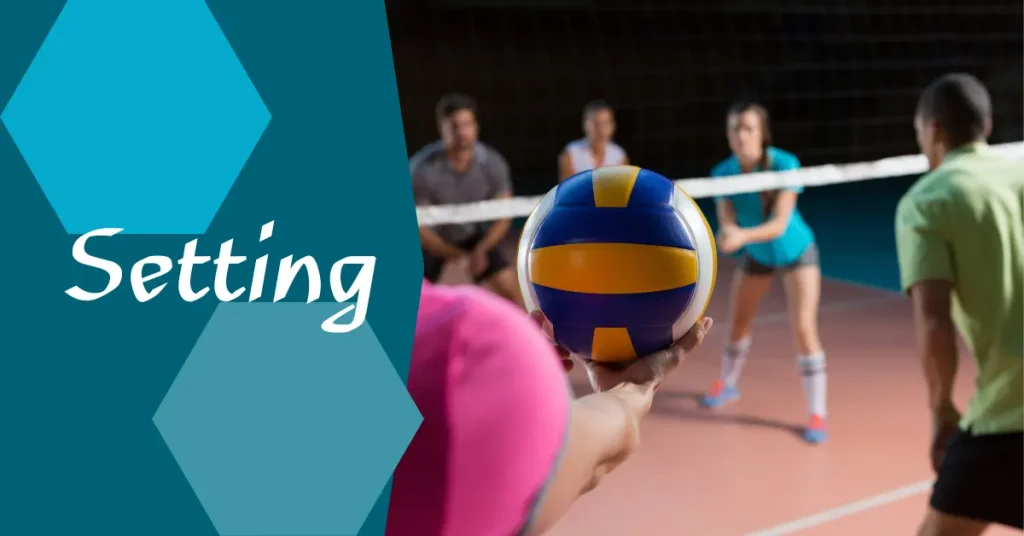
Attack/Spike;
The third touch is known as an attack or spike. Hitter does this. The attack is a forceful offensive in which the player uses the palms of the hand to hit the ball at the opposite side. The power of a hit is generated through the action of shoulder and arm muscles. The hitter intends to hit the ball where competitor players are not available so as to win the point and land the ball in their area.
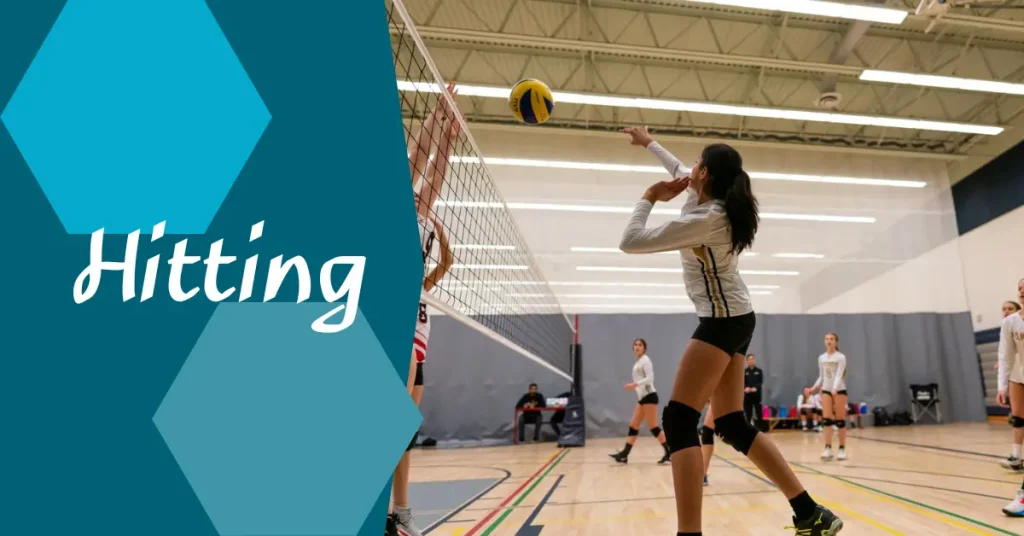
Block:
After the hitting by the opposing player, the player defends, which is known as a blocker, and the main purpose of a blocker is to put the ball back in the opponent’s area. So before hitting, be aware of blockers.
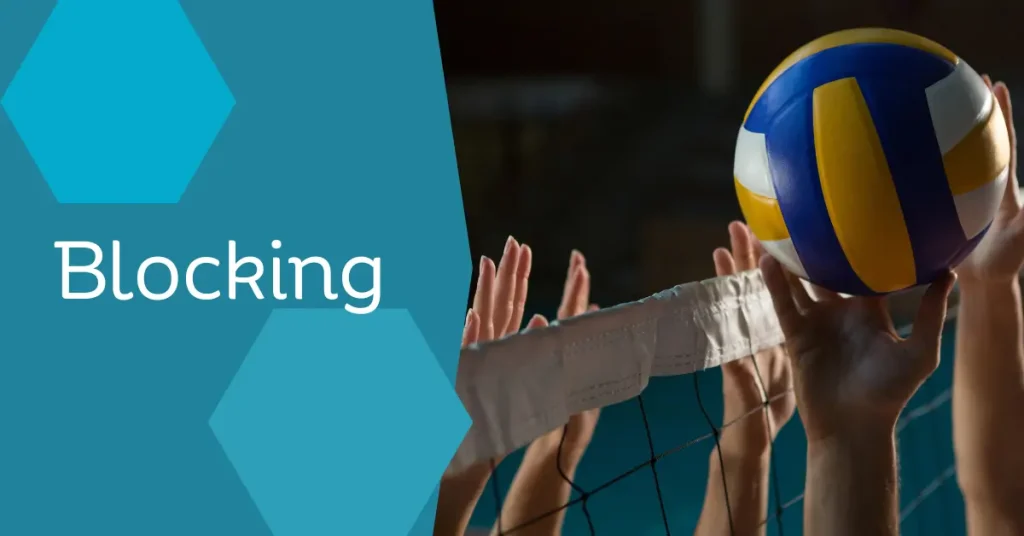
Scoring:
After the first serve, the team that wins the point goes for the next serve. So if a team is winning a point, the serve will go on from their side until they lose a point. The same is the procedure for both teams. In volleyball, 25 points with a difference of 2 are for a team to win a set. Volleyball gameplay is of four sets. The team who won 3 sets with the difference of 2 points won the volleyball one gameplay. Suppose both teams won 2 sets with a difference of 2. The next set, which is known as the fifth set, will be played. In the fifth set, the team who won 15 points with a difference of 2 won the entire gameplay.
Now you might be thinking that if my team first secures 25 points and the other team’s points are 24, then who will win because there is no difference of 2? In that case, this game set is continued until the points difference is 2. So, for your team’s victory, your team would secure 26 points, and the other team’s points would remain the same at 24. If your team remains the same for 25 points and the other team secures 27 points, then the victory will be with the other team because the difference is 2. The same is the rule for the fifth set if required.
After reading this, if you are recreational, then this is enough for you, but if you are a beginner and you want to be a pro, go ahead for rotation.
Rotation:
The rotation is tricky, but I will try my best to explain it.
In-Rotation:
In-rotation refers to a situation in volleyball where all players on a team stand in their correct positions. No player is standing to the right or left and top or below to the other players. In simple words, no one is mixing.
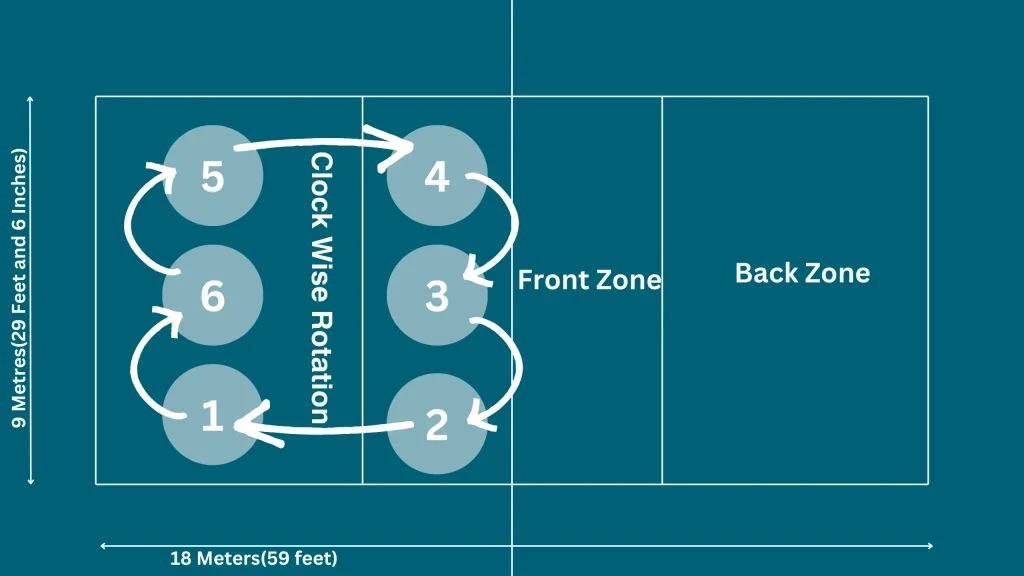
From this picture, you will understand that Player 1 is on the right side of Player 6 and below Player 2. So, if the player remains on his side, which is highlighted, this means he is in rotation with players 2 and 6. Player 1 is not allowed to move left of Player 6 and is not allowed to go above player 2. If he can do this, this will be a rotational fault. The same is the in-rotational rule for all other players.
Out of Rotation:
From the previous para on In-rotation for player 1, if he moves left or above the other player, he will be out of rotation. It’s a fault, and your team will lose a point.
There is another thing that needs to be understood, which is that back-zone players are not allowed to play in the front zone, and front-zone players are also not allowed to play in the front zone during a serve from the opposing team. If the serve is thrown from the opposing team and the ball is above the net, then the back-zone players are allowed to jump and hit the ball from the front zone. Same as for the front zone players.
Rotation Simulation Or Serving Rotation:
When an opponent team is serving, there is no need for serving rotation. Whenever the opposing team loses a point, and your team opts for serve, then every player changes their direction in a clockwise direction.
From the above picture, you will understand that Player 1 goes to the place of Player 6, player 6 takes the place of Player 5, and so on.
Keep in mind one thing: when an opposing team loses a point, and now it’s your turn for serve, then your team will do a clockwise rotation. So after that serve, if you keep on winning points, you don’t need rotation. Serving rotation is needed when the opposing team loses a point and your team wins a point.
While doing a serve rotation, there is one restriction on Libero, which is he cannot play in the font zone. There is limited substitution a team can do, but there is no limit to substitution on Libero. A libero can substitute n numbers of times.
From this picture, you will understand that the back zone player 6 is substituted with Libero. After winning a point, all players rotate in a clockwise direction, and whenever the Libero gets a position in the front zone, he will be replaced with player 6, who is outside the court. From the above image, you will find that after a certain number of rotations, all the player comes back to their positions from where they started or stood before.
FAQs:
Conclusion:
In final words, volleyball is an interesting game, but it needs some concern to understand the rules and regulations of indoor volleyball. These rules first seem difficult, but when you understand them, they will be easy for you. Understanding court dimensions, serving techniques, player roles (passing, setting, attacking, blocking), and scoring rules is essential. Additionally, grasping the concept of rotation, both in-rotation and out-of-rotation, enhances game strategy.

